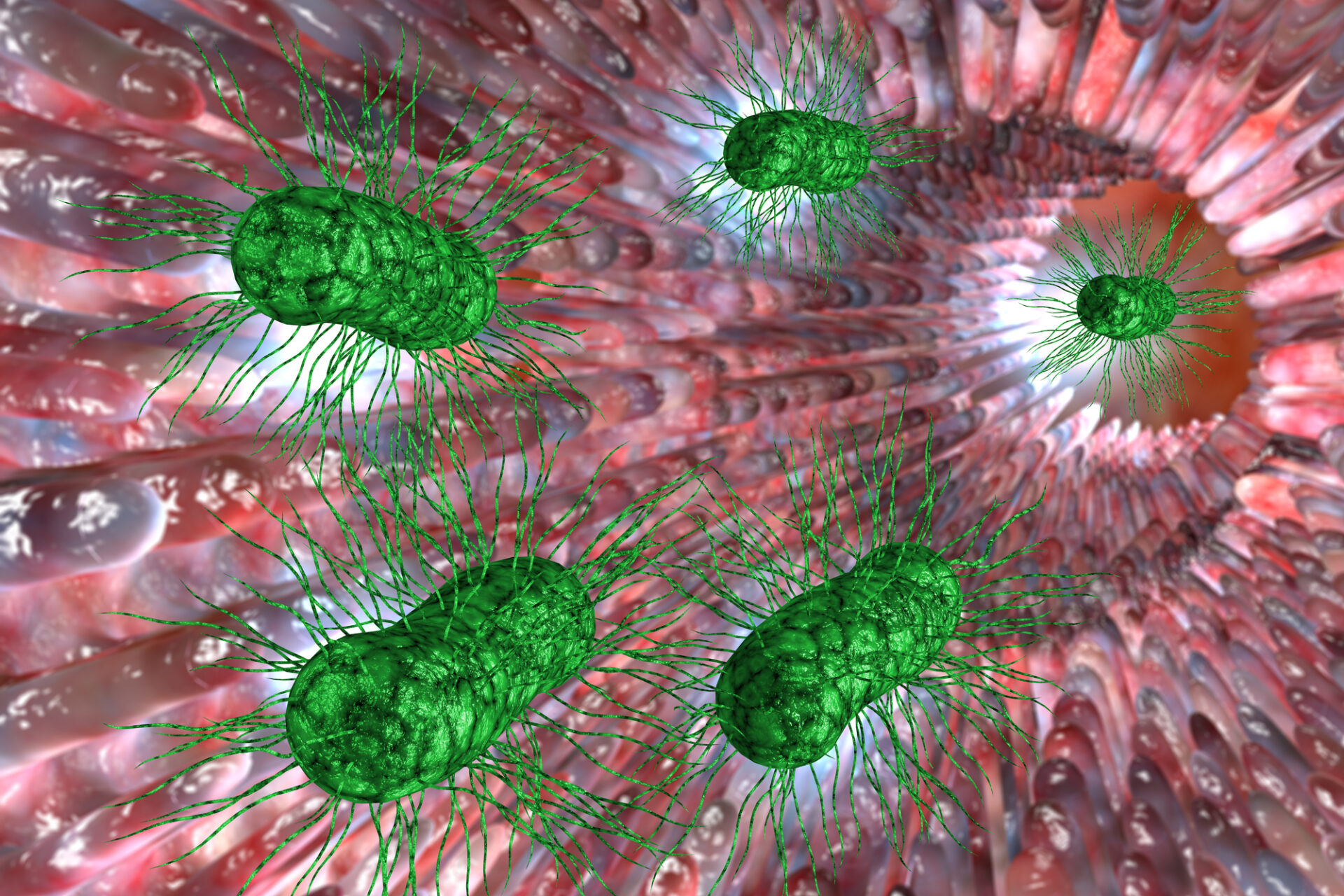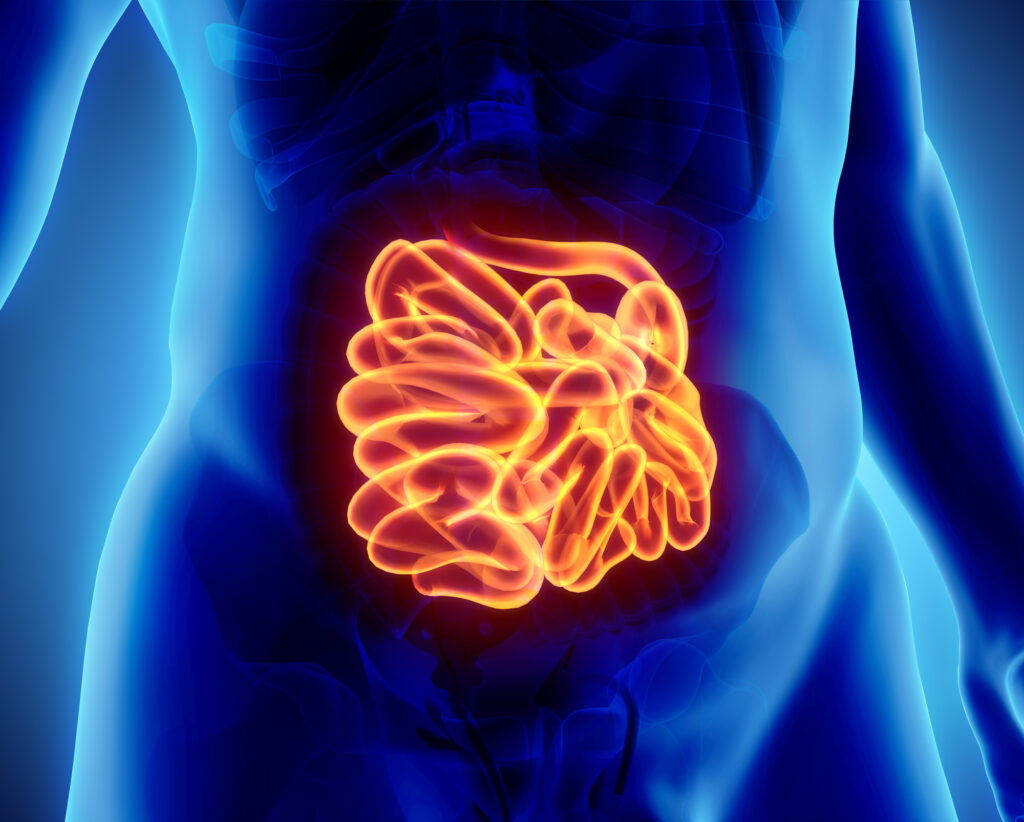A recent review published in Nutrients examines the relationship between small intestinal bacterial overgrowth (SIBO) and non-alcoholic fatty liver disease (NAFLD). This relationship has gained research attention, as a growing body of evidence points to gut microbiota as playing a potentially causal role in NAFLD development and progression, including the promotion of the inflammatory response, hepatic steatosis, fibrosis, cirrhosis, and carcinogenesis.
These two conditions certainly are associated, as the presence of either increases the risk for the other. For example, in a small cohort study just published, SIBO was diagnosed in 3.3% of healthy controls (via duodenal aspirate), compared to 15.7% and 22.2% of study participants with NAFLD and non-alcoholic steatohepatitis (NASH), respectively, while SIBO was diagnosed in 47.1% of individuals with NASH-associated cirrhosis. In a 2020 systematic review of 10 studies and over 1000 participants, SIBO was associated with a nearly 4-fold increase in the incidence of NAFLD, while in a more recent systematic review the prevalence of SIBO was found to be as high as 35% among patients with NAFLD. It’s important to note that some of these analyses accepted breath tests for a diagnosis of SIBO, known for their poor sensitivity (and moderate specificity), and thus likely to underestimate the actual SIBO prevalence. For example, a 2022 review in the American Journal of Gastroenterology cites the glucose breath test as having a sensitivity of 62.5% and a specificity of 81.7% (using small bowel aspiration as the gold standard), comparable to the lactulose breath test (sensitivity of 52.4% to 57.1% and specificity of 84.6% to 85.7%).
So how are these two conditions connected? There are many plausible links between them, especially when considering the bidirectional cross-talk between the liver and the gut, i.e., the “gut-liver axis.” In one direction, this includes the transport of gut-derived products (such as trimethylamine, secondary bile acids, short-chain fatty acids (SCFAs), and ethanol) to the liver via the portal vein, and in the other direction, it includes hepatic synthesis of bile acids which are released in the terminal ileum, with both processes occurring routinely in healthy individuals.
However, when the normal gut vascular protection is impaired, i.e., intestinal barrier permeability is increased, a variety of gut products (including pathogen-associated molecular patterns such as LPS (endotoxin), as well as other microbiome-derived metabolites) are transported to the liver and trigger a pro-inflammatory cascade. The liver is considered a “first-pass organ,” meaning it receives the highest concentration of microbial-derived compounds, which may be increased as a result of barrier damage or higher bacterial concentration (this may be why antioxidants, such as vitamin E, are considered as part of the therapeutic strategy for some patients with NAFLD, as they may provide hepatoprotection from gut-derived toxins). In a small study, individuals with NAFLD were confirmed by biopsy to have increased gut permeability, which was associated with the prevalence of SIBO.
It’s also important to note that NAFLD can be divided into two subtypes. While one of these is more closely related to an infectious or toxin etiology, the more common of the two subtypes is closely related to metabolic syndrome (Met-S), and insulin resistance is suspected to be the primary driver. Indeed, there is a growing consensus to shift toward reclassifying NAFLD as MAFLD, metabolic-associated fatty liver disease, in recognition of the metabolic dysfunction which accompanies (and promotes) NAFLD, as well as to de-emphasize the intake of small amounts of alcohol that may inappropriately label patients as having alcohol-induced liver disease.
Although not clearly established, a number of studies point to SIBO and dysbiosis as potentially causative of NAFLD, perhaps due to altered bile acid homeostasis, endotoxin production and leaky gut. Several animal models clearly point to a link between endotoxin production, for example, and the insulin resistance that promotes weight gain, diabetes, and obesity, conditions that are closely tied to the prevalence of NAFLD in humans. Given that hyperglycemia also drives intestinal barrier dysfunction, causality is hard to determine, but it may be a feed-forward pathological cycle. Additionally, dysbiosis may not be limited only to changes in bacterial composition or density. For example, in a recently published small study, metagenomic analyses of saliva, supragingival plaque, and fecal samples indicated changes in core fungal functions between healthy individuals and those with MAFLD, some of which were associated with increases in BMI, lipids, hepatic enzyme levels, etc., suggesting a possible “oral-gut-liver” axis. Specific changes found in the microbiome and mycobiome in patients with SIBO and MAFLD were described in the recent Nutrients review.
What clinical evidence do we have related to the treatment of SIBO and its possible effects on NAFLD and associated consequences? A systematic review of 105 articles and nearly 7,000 subjects published in BMJ Open may shed some light. In participants with some form of metabolic disorder (NAFLD, obesity, diabetes), probiotic use was associated with small but consistent improvements in a number of metabolic markers, including hepatic enzymes, fasting glucose, insulin resistance, etc., in some patient populations. In an animal model, antibiotic use was shown to have favorable effects on non-alcoholic steatohepatitis, suggesting that modulating the microbiota may have hepatic benefits. In one trial of humans with NAFLD, the antibiotic improved insulin resistance and reduced multiple pro-inflammatory cytokines as well as NAFLD-liver fat score, though another clinical trial found a worsening of insulin sensitivity with the antibiotic’s use among participants with prediabetes or other metabolic dysfunction. Interestingly, it may be that among patients with SIBO, first reducing the bacterial burden and subsequently replenishing beneficial microbiota will have the largest therapeutic benefit, but this study has not been done.







